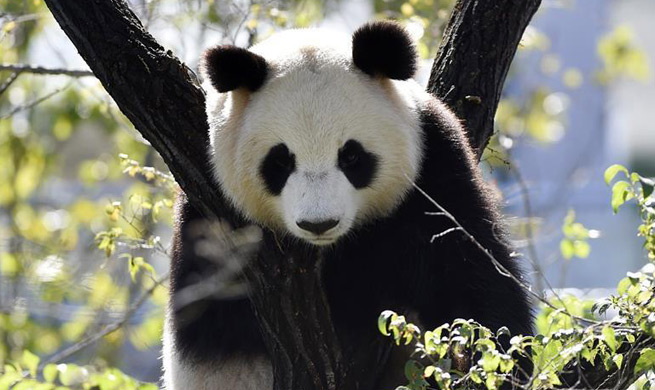LOS ANGELES, Sept. 27 (Xinhua) -- A newly created animal movement model, which reveals that seabirds orient themselves when over an ocean and compensate for wind drift even when landmarks are absent, may pave the way to a new era of analyzing animal decision-making and contributes to many other possible tech applications.
Numerous flying and swimming animals constantly need to control their direction of orientation in a flow to reach their distant destination. However, animal orientation in a flow has yet to be satisfactorily explained because it is difficult to directly measure animal heading and flow.
Methods employed by researchers to date are technically demanding and have demonstrated limited application, requiring long-term recordings of animal body orientation, for example.
In search of a better technique, researchers developed a new animal movement model based on the GPS (Global Positioning System). This statistical model can help scientists to simultaneously estimate animal navigational decision-making and ocean wind information over the range traversed by free-ranging birds, according to the new study.
Although the main purpose of the study is to reveal birds' navigation capacity, researchers say that there are many possible tech applications.
First, the study can contribute to meteorology. "The new method we proposed in this study enables to estimate wind speed and wind direction from bird track data," Yusuke Goto, a researcher at Atmosphere and Ocean Research Institute, University of Tokyo, Chiba, Japan, told Xinhua in an Email.
"As birds fly over a wide range, this wind estimates can spatiotemporally interpolate the wind data observed by existing way such as buoys, weather stations and weather satellites. This may help to increase the accuracy of weather forecasts," Goto said.
Secondly, researchers believe the new finding can help with conservation efforts. "I think to know the effect of recent climate change on the animals is important in terms of conservation," said Goto. "Our method enables us to monitor changing environment, current and wind, surrounding marine animals."
In the study, the authors recorded one location per minute of homing tracks in 33 Calonectris leucomelas, a species of seabird, to examine their responses to wind while the birds were flying across an open ocean for an extended period of time.
Interestingly, the researchers found that the birds correctly evaluated and compensated for wind drift, which resulted in ideal navigation, a finding that hints shearwaters possess a "map sense," or ability to know their location on earth in addition to the distance and direction to their destination, according to the study.
The model is unique in that it requires only GPS tracking data, which is beneficial because it is the most commonly used animal tracking measurement, researchers say. The model can also be applied to investigating the navigational decision-making of swimming animals.
The new research "also enables us to know how animals respond to the environmental change. This knowledge may help us to predict where they frequently go, the energetic cost for travel and consequential increase/decrease of the population," Goto said.

















